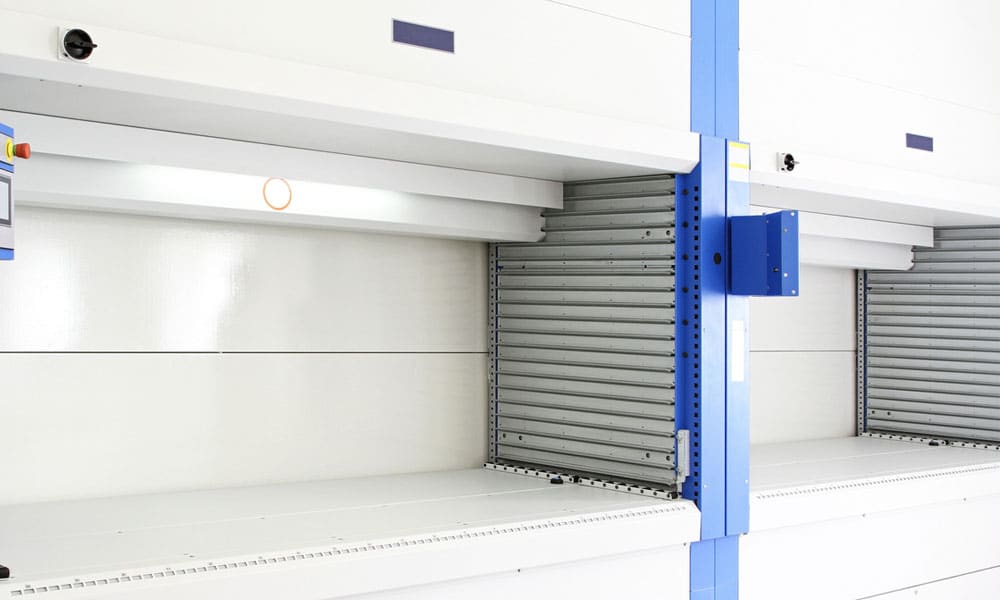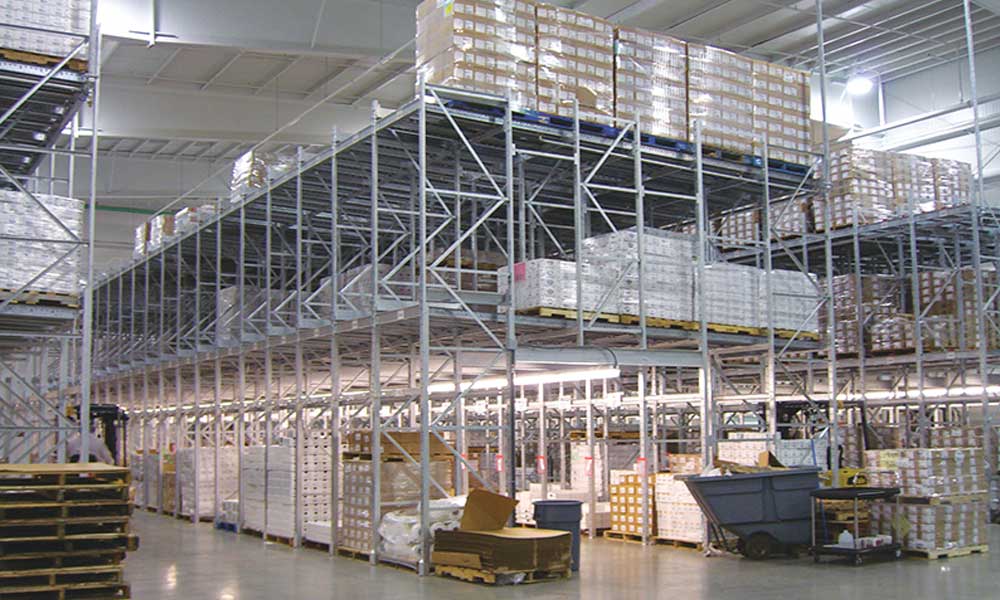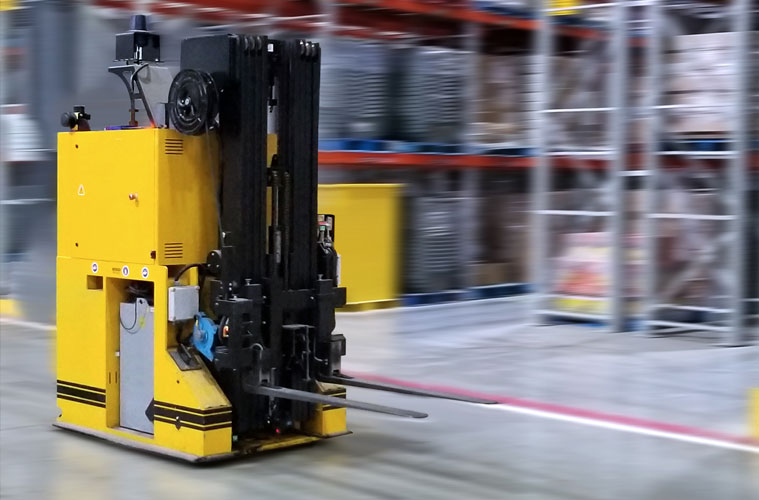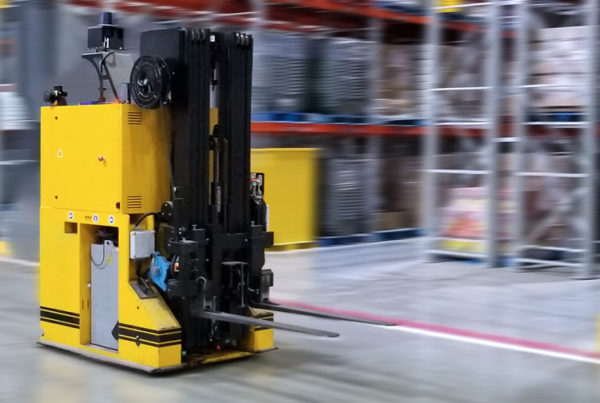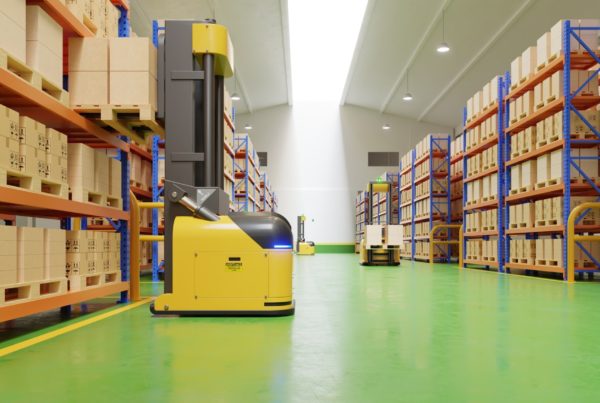What is storage and picking automation?
Too often, order fulfillment facilities and systems aren’t upgraded because of the industry myth that the often publicized and expensive automated storage and retrieval systems (AS/RSs) are the only way to automate picking processes in competitive markets.
However, warehouse automation can be any upgrade to a paper-based order fulfillment system. Automated picking can mean a goods-to-person pick solution such as an AS/RS. But it can also mean an automated person-to-goods picking system. Pick-to-light systems, for example, use lights at the pick face to guide operators from item to item – the picking solution includes automation, but the physical act of picking is still manual.
At PeakLogix, our approach is to find the least intrusive, most cost-effective means of increasing throughput and accuracy, while lowering costs due to inefficiencies, accidents, or damages. This can be done with something as simple as a handheld RFID scanner or as complex as a pallet-loading AS/RS.
Goods-to-person vs person-to-goods
Perhaps the most important distinction between the many kinds of order fulfillment systems is between goods-to-person and person-to-goods (also known as goods-to-man and man-to-goods).
Person-to-goods systems, often done with paper, require operators to travel the warehouse floor hunting for item locations. But the industry has begun phasing out this manual picking method – more than 55% of distribution centers reported using this paper-based picking system in 2021.
Goods-to-person systems, in contrast, offer increased accuracy, speed, and safety, and decreased man-hours, by having automated robots retrieve items from storage and bring them to the operator at a picking station.
Types of person-to-goods systems
Person-to-goods systems often require the least up-front investment. Changes to equipment and structure are minimal, and the focus is on streamlining the process of the operators. While pick modules create efficiency through the addition of structural components, the technologies of radio frequency picking, pick-to-light, and pick-to-voice can decrease picking error rates by 67% when compared to manual paper-based methods.
Pick modules
Pick modules are an upgrade from traditional static rack systems. Items replenished on one side flow through to the other, where they are broken into smaller cases or picked. If you imagine the milk display in your local grocer you can visualize how this works – the milk is picked by you at the pick-face, and replenished in a flow-through system as gravity pulls the remaining milk to the front.
In distribution centers, this can be scaled up to handle pallet loads across entire warehouses. Pallet rack systems, outfitted with wheels that allow pallet flow to go from the replenishment side to pick face, are essentially converted into large conveyors. These are best used for fast-moving items and high-volume SKUs in a first-in, first-out (FIFO) system.
Pick-by-radio frequency
Radio frequency (RF) picking is a cost-effective and non-invasive upgrade from paper-based systems. From the operator’s perspective, the biggest change in their process is that they now carry a mobile user interface (the pick-by-RF terminal) that allows the warehouse management system (WMS) to communicate with them directly. This happens in real time, wherever the operators are, via a wireless network established throughout the facility. To signal that the order is picked, operators communicate with the WMS by scanning the item’s barcode.
RF picking is fast, accurate, and versatile enough to handle picking in waves, batches, or single items. It’s also often used in goods-to-person systems.
Pick-to-light
In pick-to-light systems, the WMS guides the operator to the picking location through a series of lights. At the picking site, the WMS illuminates the quantity to be picked, which the operator confirms by pressing an indicator.
Pick-to-light can also be implemented in goods-to-person systems. Lights at a picking station can signal which tote among several an operator needs to pick from.
Pick-to-light has many of the same advantages as RF and voice picking, including non-intrusive implementation, real-time feedback, and increased speed and accuracy over paper-based picking. And according to Material Handling Institute, pick-to-light can improve pick rates by 30-50% with 99.9% accuracy.
Pick-to-light is ideal in diverse settings where language may be a barrier. Unlike RF picking and pick-to-voice, which require either literacy or fluency in a language, pick-to-light system operators only have to follow the lights and numbers.
Pick-to-voice
Voice-picking systems offer a heads-up, hands-free interface. Operators wear a headset over which instructions are read aloud by the WMS. The operator confirms the pick by speaking into the microphone.
Because it’s a heads-up interface, operators are more aware of their surroundings, such as forklift traffic or floor debris, and are better able to focus on their task, which improves both safety and accuracy. The system can be faster than picking by RF because operators don’t have to take time to read labels or scan barcodes, and have both hands free for lifting and moving boxes or totes, or operating machinery.
In the past, accents, dialects, and fluency were major problems for voice systems. But today’s technology has caught up with the demand, and operators of many languages and dialects are able to use the system within moments.
Types of goods-to-person systems
Facilities with enhanced demands for accuracy, throughput, and safety will see benefits in upgrading to goods-to-person systems. While PeakLogix works to integrate these systems with as little disruption to the operations as possible, they often require changes to a facility’s layout, the installation of equipment, and the training of staff. For these reasons, they generally require more up-front investment than person-to-goods systems. However, the gains achieved can increase a facility’s competitive advantage.
AGVs
Automated guided vehicles (AGVs) have been around since the 1950s, and their technology continues to improve. Some AGVs travel paths are marked by wires or tape. Others navigate by radio waves, cameras, or lasers. An AGV can be an unmanned fork truck for moving pallets, a heavy-duty sled for heavy industrial pieces, roaming shelves for moving cases or even smaller pieces, or nearly anything else the market has a demand for.
No matter what they look like, the purpose of their tasks is the same – automating the repetitive job of picking and moving materials, and freeing up valuable labor.
Two major advantages of AGVs are that:
- They require limited changes to a facility’s infrastructure. Simple systems only need for their routes to be marked with tape. More advanced AGVs are connected to the WMS and, after their routes are programmed, can operate independently.
- They’re scalable in both function and cost; they can be programmed for limited tasks that can be expanded, and they can be purchased one unit at a time.
Horizontal carousel
Horizontal carousels are a series of rotating shelves that can store separate products or totes of individual items, and are both a storage device and a pick face. Controlled by the WMS, the shelves rotate to a picker assigned to a picking station.
While high volume items are stored within easy reach, lower frequency items may be stored at an elevation that requires a lifting-platform be used.
We’ve seen facilities achieve 450% increases in the pick-rate for small parts by implementing a system that featured horizontal carousels and pick-to-light technologies.
The benefits of horizontal carousels include:
- dramatically increased throughput,
- freed-up floor space for more inventory or other uses,
- reduced labor costs, and
- improved accuracy up to 99.99%.
Vertical lift module
Vertical lift modules (VLMs) are both a warehouse storage and retrieval system. Because storage is vertical, effective warehouse space is increased. Orders are sent directly through the WMS. Items are picked using an automated extractor that quickly moves vertically through the module, selecting the appropriate storage tray and bringing it to an operator at an access point.
VLMs can be customized to match your needs. They can be built to the height of most warehouses, saving valuable floor space. By maximizing a facility’s cubic space, SKU count and density can be increased, and operators made more efficient.
VLMs are more highly modular and can be integrated into a facility progressively, one unit at a time.
Miniload AS/RS
Miniload AS/RSs are designed to automatically store and retrieve small goods. Controlled by the WMS, they are designed as narrowly spaced pallet racks. Inside the racks are totes or eaches on shelves. Between the racks, an extractor moves up and down the aisle in two dimensions. Items can be picked with different kinds of extractors depending on their material and shape.
Similar to VLMs, miniload AS/RSs are scalable; as your demands grow, more racking can be introduced. They can also be used in any environment, including those that might be caustic to staff, and offer some of the highest density storage on the market.
Pallet load AS/RS
Pallet-load AS/RSs (also known as unit-load AS/RSs) are larger versions of the miniload systems. Pallets or pallet-sized eaches are stored in static racking which an extractor moves through in two dimensions, storing and retrieving pallets automatically.
These systems are often larger than miniload AS/RSs, both in terms of their height and storage capacity.
Selection considerations
While all of these automated options are to some degree modular and scalable, how best to integrate them into your operations is a complex question with many variables. An in-depth discovery process often finds the best solution involves more than one of these systems working together.
Often, implementing the system that least intrudes on daily operations allows the facility to realize its ROI, and then systems can be further invested in and expanded upon where and how it’s most cost effective. Each system fills its own niche, and which is right depends on many factors, including floor space, current operations and procedures, the kinds of items being picked, and the required throughput.
Pick-by-RF requires the least initial investment but, as a standalone person-to-goods system, sees less benefit in throughput than other options. RF picking is best in situations when speed isn’t the critical factor, but improvements in accuracy and efficiency are needed.
Pick-to-voice systems require more initial investment than RF picking, but less than pick-to-light. We’ve found our best cost-benefit with pick-to-voice in settings that require multiple kinds of picks. If your facility sometimes handles pallets, sometimes boxes, and sometimes eaches, then your best solution might include pick-to-voice.
Pick-to-light systems are excellent in diverse settings where language can be a barrier to communication. Pick-to-light also shines when operators pick from conveyors, carousels, or other sharply defined areas.
AGVs, horizontal carousels, and VLMs are designed for facilities whose needs can’t be met by person-to-goods picking, but aren’t seeing enough throughput to realize the ROI on AS/RS. In all of these systems, the interactions operators have with pieces is minimized, and their time spent traveling to and from the product reduced to zero. VLMs and horizontal carousels, while both high-density storage solutions, require at least some dedicated space on the warehouse floor. AGV’s, on the other hand, are able to maneuver within a warehouse’s existing space.
Both miniload and pallet-load AS/RS require the installation of narrowly spaced pallet racking and extractors. These are best in high-volume, high-density areas in facilities whose demand will enable the realization of their ROI.
Other benefits
While all of these technologies were meant to make the picking process more efficient, they are also used any time product needs to be moved, including put away, receiving and replenishment, sortation, and cross-docking.
In part, this is due to the fact that the benefits these systems bring to picking – the improved speeds and accuracy, and minimized safety concerns and damages – are also seen in all of these other activities. When operations upgrade their inventory management systems from paper-and-pencil to a more integrated and automated form of order processing, they can achieve on average a 25% increase in productivity and 10-20% gain in space utilization.
At the same time, using these systems holistically, across every part of a warehouse’s operations, leads to tighter inventory control, which only further improves a facility’s efficiencies.

